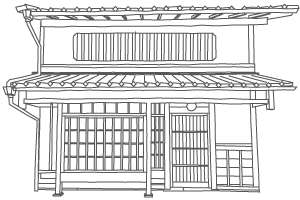Non-conforming Buildings
What is a Non-conforming Building?
There are numerous regulations established by the Building Standard Act in Japan that govern the construction and compliance of buildings. In addition to standard buildings that fully adhere to these laws, two notable categories emerge: "Illegal Buildings" and "Existing Non-conforming Buildings".
The former, termed as "Illegal Buildings", encompasses structures erected without compliance with current regulations, subject to penalties and potential orders for alterations. On the other hand, "Existing Non-conforming Buildings" adhered to standards during construction but do not align with present laws. Notably, Kyomachiyas, constructed before 1950, fall into this latter category.

The table below provides a comprehensive comparison between these 2 categories, covering their definitions, examples, penalties, allowances for renovations, extensions, and conditions for rebuilding.
Understanding the distinctions is crucial, especially when dealing with properties like Kyomachiyas, as it sheds light on what actions are permissible and the potential consequences associated with each category.
| Illegal Buildings | Existing Non-conforming Buildings | |
| Definition | Structures built without adhering to current Building Standard Act laws. | Buildings that adhered to standards during construction but do not comply with current laws. |
| Examples | ・Buildings that exceeded the stipulated Floor Area Ratio (FAR) or Building Coverage Ratio (BCR) ・Violation of set-back regulations, usage restrictions, and/or the regulated property width that is required to be adjacent to a public road ・Construction of buildings without taking the necessary steps and procedures ・Making expansion or changing the intended usage of the buildings, which in turn violates current laws and regulations ...etc. |
Kyomachiyas that built before 1950 (the year when the current Building Standard Act is established) |
| Penalties | Directed by municipal government; non-compliance may lead to administrative orders, penalties, and legal punishment. |
Exempt from penalties as long as used in current form. |
| Renovations | Changes/renovations may be directed by municipal government. | Allowed with restrictions. (primary structural components less than 50% repair) |
| Extensions | Upon permission, providing the entire building must conform to current laws | Rarely allowed. |
| Rebuilding | Rebuilding may be directed by municipal government. | Can be rebuilt unless on prohibited land. (Rebuilt must conform to modern laws) |
| Definition | Illegal Buildings | Structures built without adhering to current Building Standard Act laws. | Existing Non-conforming Buildings | Buildings that adhered to standards during construction but do not comply with current laws. | |
|---|---|---|---|---|---|
| Examples | Illegal Buildings | ・Buildings that exceeded the stipulated Floor Area Ratio (FAR) or Building Coverage Ratio (BCR) ・Violation of set-back regulations, usage restrictions, and/or the regulated property width that is required to be adjacent to a public road ・Construction of buildings without taking the necessary steps and procedures ・Making expansion or changing the intended usage of the buildings, which in turn violates current laws and regulations ...etc. |
Existing Non-conforming Buildings | Kyomachiyas that built before 1950 (the year when the current Building Standard Act is established) | |
| Penalties | Illegal Buildings | Directed by municipal government; non-compliance may lead to administrative orders, penalties, and legal punishment. |
Existing Non-conforming Buildings | Exempt from penalties as long as used in current form. | |
| Renovations | Illegal Buildings | Changes/renovations may be directed by municipal government. | Existing Non-conforming Buildings | Allowed with restrictions. (primary structural components less than 50% repair) |
|
| Extensions | Illegal Buildings | Upon permission, providing the entire building must conform to current laws | Existing Non-conforming Buildings | Rarely allowed. | |
| Rebuilding | Illegal Buildings | Rebuilding may be directed by municipal government. | Existing Non-conforming Buildings | Can be rebuilt unless on prohibited land. (Rebuilt must conform to modern laws) |
Renovations of Non-conforming Buildings
Repair works, such as retiling the roof, repainting the walls, and redoing the stairs, are considered as renovations and are permitted for non-conforming buildings. Repairs to primary structural components like columns and beams are allowed, provided that less than half are subject to repair. If more than 50% of these components require repair, it is considered "rebuilding", and the entire building must conform to the modern laws. This would essentially require all primary structural components to be replaced with modern ones, making it impossible to retain the original features of a Kyomachiya.
Extension of Non-conforming Buildings
Allowances for building extensions are rare for "Existing Non-conforming Buildings" like Kyomachiyas. Seeking permission for extending parts of a building typically requires application to the Specific Administrative Agency. In such cases, the building must conform to current laws, which Kyomachiyas do not.
Rebuilding of Non-conforming Buildings
Non-conforming buildings, unless situated on land prohibited from reconstruction, can be rebuilt. However, the new construction must adhere to the current Building Standard Law. This might lead to an overall reduction in building size due to current regulations.
However, considering that Kyomachiya townhouses are historical buildings that cannot be rebuilt with the same traditional construction method once destroyed, we strongly recommend you think twice before demolishing them.
